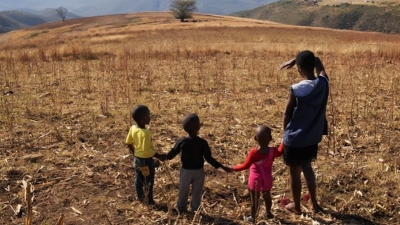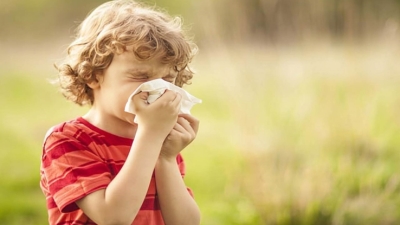Children are victims most affected by climate change

Although children are the least responsible for the climate change crisis, they bear the brunt of its devastating effects, although they are the least able to withstand the resulting shocks.
The climate change crisis is a child rights crisis; because it affects their access to water, health, education, protection and participation, and also threatens their right to survival, it infringes on children's rights enshrined in the United Nations Convention on the Rights of the Child.
According to United Nations Children's Fund (UNICEF) data, nearly 1 billion children (about half of the world's children) live in high-risk countries because of the impacts of climate change, and heatwaves threaten some 820 million children, making up more than a third of the world's children, worsening as global temperatures rise and weather patterns continue to fluctuate.
400 million children are also exposed to severe cyclones, which increase in frequency and risk as rainfall intensifies and cyclone patterns shift. Water scarcity also threatens some 920 million children. This situation is expected to worsen as droughts, water stress and scarcity of available freshwater increase.
Climate change is one of the greatest threats to children's education, owing to the severity of disasters associated with extreme weather events such as floods, droughts and high heat waves
Over the past decade, more than 91 million school-age children have faced climate shocks exacerbated by climate change. The effects were particularly evident in sub-Saharan Africa children, affecting 42 million children, and South Asia, affecting 31 million children and, among the various climate risks assessed, droughts appear to be the most serious and persistent
Although droughts are most severe and affect more children, floods are the main cause of forced displacements of school-age children, affecting 31 million children, each of which is an example of delays or disruption in children's school life.
Hence; the climate change crisis is a drag on completing children's education, especially in poor communities and among low-income families exacerbated by climate change and a lack of crops and natural resources, prompting their children to drop out early
Climate change is also catastrophically affecting children's health, with studies indicating a series of harmful health and psychological impacts facing today's children, and nearly 3 times the climate disasters faced by their grandparents
As a result of increasing forest fires, storms, floods, droughts, high temperatures and low air quality; many problems are exacerbated above all by chest disease, growth problems and changes in their genetic composition, according to a report published by Science.
Severe weather can also hinder access to medical care, such as with Hurricanes Michael and Florence in the United States, hospitals can be closed or forced to evacuate patients, and a child requiring dialysis, sprays or a ventilator may be in serious trouble if electricity is cut off.
Stress associated with losing their home or school also leads to diseases later in life such as heart disease, stroke and high blood pressure












